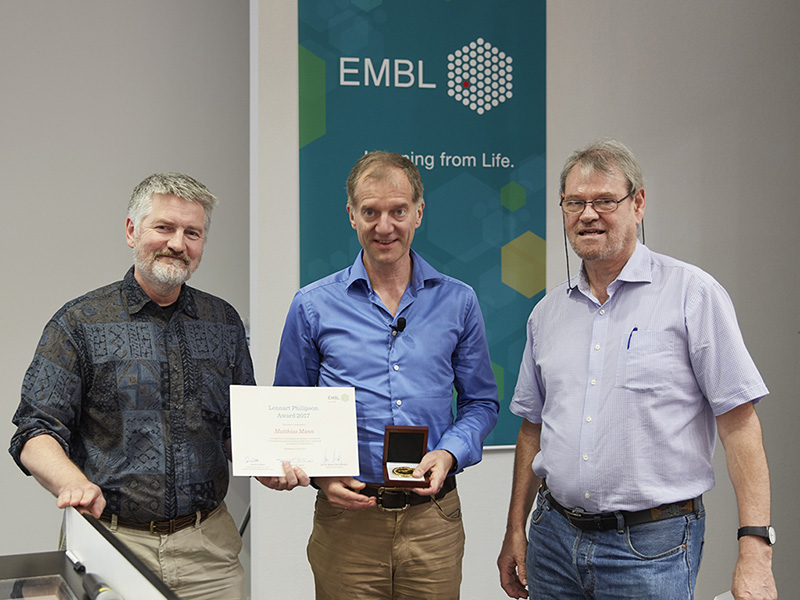2017 Lennart Philipson Award

Matthias Mann was selected as the 2017 Lennart Philipson Award winner for his pioneering work in the field of mass spectrometry-based proteomics. Matthias has contributed breakthroughs that have revolutionised proteomics techniques in biomedical laboratories around the world. His contributions include the “peptide sequence tag” approach which allows proteins to be computationally identified by the fragment spectra; nanoelectrospray which allows minute quantities of protein to be tested; and methods for analysing proteins after extracting them from gels.
Since 2005 Matthias has been Director of the Department of Proteomics and Signal Transduction at the Max Planck Institute for Biochemistry in Munich. He is also Programme Director at the Novo Nordisk Foundation Centre for Protein Research where his Clinical Proteomics group concentrates on large-scale analysis of human plasma proteomes.
Matthias Mann was a group leader at EMBL in Heidelberg (1992-1998)
Read interview with Matthias: Mass spectrometry master
Mass spectrometry (MS) enables researchers to identify molecules such as proteins and nucleic acids quickly and accurately. Yet while the technique has been used by physicists for the past century, it was not until the 1990s that biologists began to make use of its potential. One of the people driving this biological revolution was EMBL alumnus Matthias Mann, a physicist who led the development of methods that helped bring MS from the margins to the mainstream.
MS, a technique for sorting unknown molecules by their mass and electric charge in order to identify them, requires the molecules to be both electrically charged and in the form of a gas. In order to get them into this state, Mann’s former advisor, John Fenn, developed a technology called electrospray ionisation – a method for producing charged particles, for which Fenn was awarded the Nobel Prize. Mann then took his advisor’s method one crucial step further. Electrospray ionisation requires a quantity of sample that, in the case of samples containing proteins and amino acids, often isn’t available. Along with his group, Mann found that by decreasing the size of the tip through which the solution is sprayed and lowering the rate of liquid flow through the needle, this new technique, called nanoelectrospray, could be used even on biological samples in tiny quantities.
Still, nanoelectrospray had its limitations – it could only be used to identify peptides with different masses. Peptides, like proteins, are compounds composed of amino acids arranged in a set order. To distinguish peptides of the same mass, he and his team developed another technique. They found that peptides could be identified by determining only a tiny stretch – a few amino acids long – plus the masses of the surrounding amino acids. This characteristic chunk provided researchers with a unique fingerprint for the peptide, which they could then compare in a database to determine the peptide’s identity.
Mann’s postdoctoral student, Andrej Shevchenko, further improved the sensitivity for identifying peptides by developing a technique to prepare samples containing proteins for nanoelectrospray. By staining the proteins using silver rather than the standard dye, the proteins of interest could be distinguished to a greater degree of sensitivity from the wash of background proteins in the sample.
These three achievements have made it possible for Mann’s team and others to identify important proteins, making key contributions to the field of proteomics – the mapping of all proteins in a particular organism.
By Margaux Phares and Sarah B. Puschmann